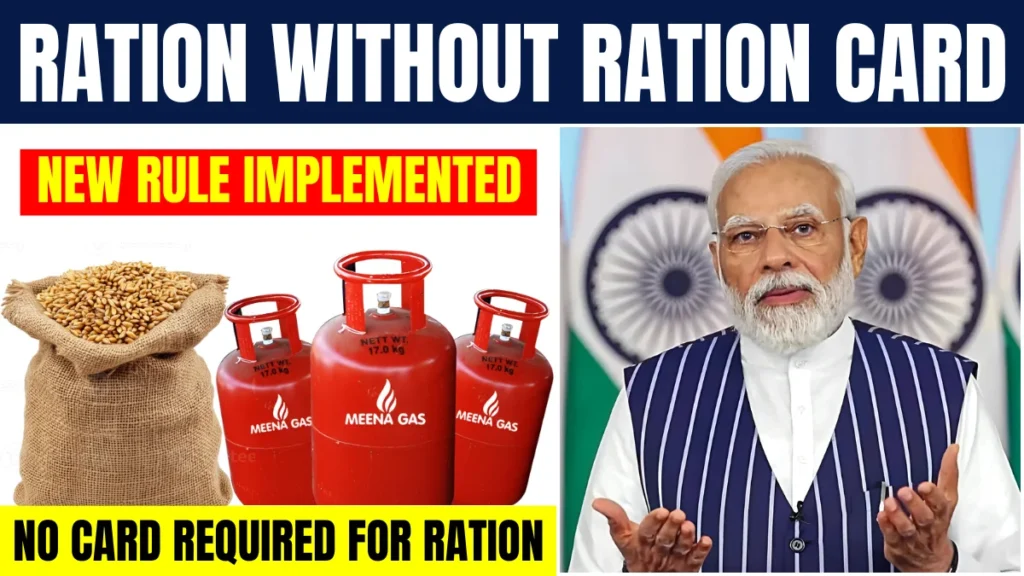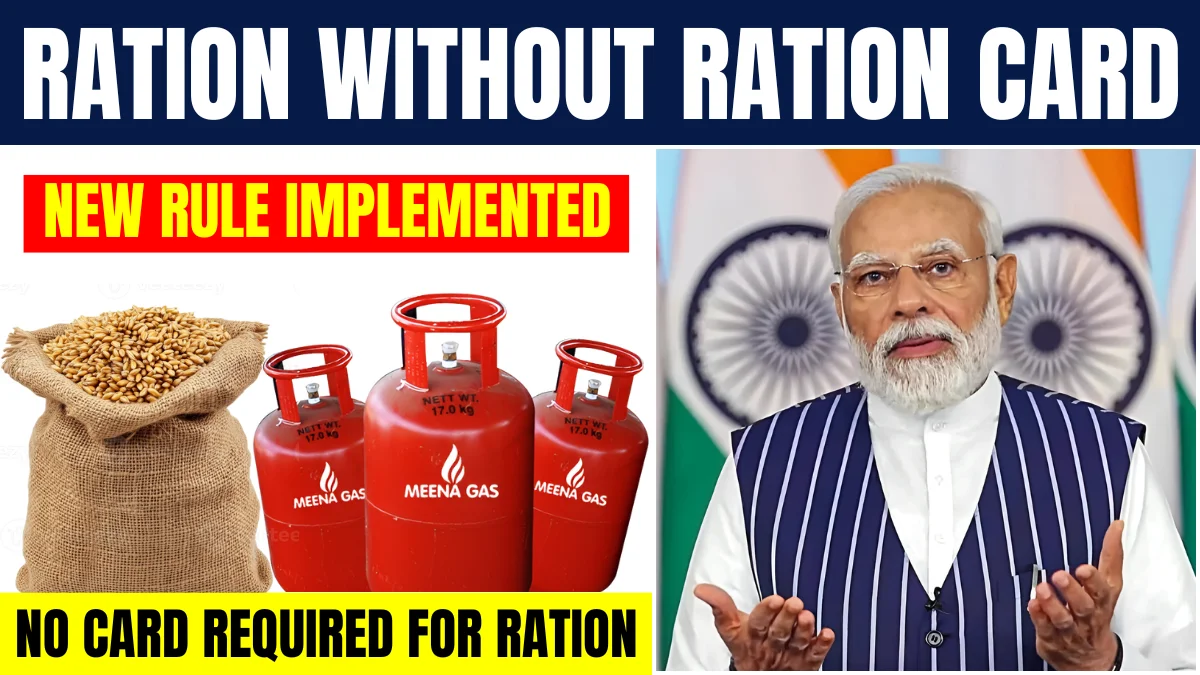Ration Without Ration Card: The government of India has introduced a groundbreaking policy that allows people to access essential food items without the need for a ration card. This change is part of an effort to simplify the process and make essential goods more accessible to everyone, particularly to those who have been excluded from the existing ration system.
The rule eliminates the need for the traditional ration card, which has often been a barrier for many individuals, especially those from economically disadvantaged backgrounds or migrant workers who have faced difficulties in obtaining one.

The Need for Ration Cards
Ration cards have traditionally served as a key document for people to access subsidized food grains, essential items, and other necessities through the Public Distribution System (PDS). However, over the years, it became clear that this system was not reaching everyone who needed it. Migrants, low-income individuals, and those who had not registered for a ration card were left out of the benefits. This new policy seeks to address that issue, ensuring that all citizens, regardless of their status or location, can access essential food supplies.
How the New System Works
Under the new system, citizens no longer need a ration card to purchase essential items such as rice, wheat, pulses, and cooking oil. Instead, the government has put in place an alternate system, allowing individuals to buy these items at subsidized rates using their Aadhaar card or other valid identification documents. This makes the process simpler, especially for people who may not have had the time or resources to apply for a ration card.
The government has set up designated ration shops where individuals can present their Aadhaar card to prove their identity and access the subsidized items. The aim is to make the distribution of essential goods faster and more efficient, while also ensuring that no one is excluded from this critical support.
Who Can Benefit from the New Rule?
The new rule is designed to help a wide range of people who may have been excluded from the traditional ration card system. Migrants, daily wage workers, and people living in remote areas are among the key groups that will benefit. Many people in these categories have faced challenges in getting a ration card due to the bureaucratic processes or because they have been constantly moving in search of work. With the new system, these individuals can now access subsidized goods more easily.
Additionally, those who have lost their ration cards or faced difficulties in renewing them will no longer need to worry about missing out on essential food supplies. The simplification of the process is aimed at making life easier for people who previously struggled with the complexity of the system.
Advantages of the Ration Without Ration Card Rule
The most significant advantage of this new rule is increased inclusivity. By removing the need for a ration card, the government is ensuring that no one is left behind, regardless of their social or economic status. People who have been living in India without a permanent address, or those who may not have the necessary documents to get a ration card, can now access the same benefits as everyone else.
Another major advantage is the reduction of corruption and misuse within the Public Distribution System. The previous system, which was heavily reliant on ration cards, often faced challenges such as fraudulent activities, distribution inefficiencies, and corruption. With the introduction of a more streamlined process using Aadhaar and other identification systems, the government aims to curb these issues and make the distribution of essential goods more transparent and accountable.
How Will Identification Be Verified?
One of the core elements of the new system is the use of Aadhaar cards for identity verification. The Aadhaar card, a unique identification number issued by the government, will be used to authenticate the identity of individuals at the ration shops. This reduces the chances of identity fraud and ensures that only the rightful beneficiaries can access the subsidized items.
In some cases, where an individual does not have an Aadhaar card, other forms of government-issued identification may be accepted. However, the Aadhaar card is expected to be the primary mode of verification for most citizens.
Potential Challenges of the New System
While the new rule offers numerous benefits, there are still potential challenges to its implementation. One major concern is the accessibility of Aadhaar cards. While most citizens have Aadhaar cards, there are still some in rural and remote areas who may not have one. In such cases, the government will need to ensure that alternatives are available, such as using voter ID cards or other documents for identity verification.
Another challenge is the management of the new distribution system. The process of ensuring that subsidized food is available to everyone without ration cards will require effective monitoring and logistics. If not properly managed, there could be delays in the supply of goods or issues with stock availability at ration shops.
Future Outlook for the Ration System
The introduction of the “Ration Without Ration Card” rule is part of a broader effort to modernize the Public Distribution System and make it more accessible to all. The government plans to continue improving the efficiency of food distribution and ensure that it reaches even the most marginalized communities.
There are also ongoing efforts to incorporate technology into the system, such as integrating digital payment systems at ration shops, and using apps to track distribution and supply chains. These technological advancements will likely further streamline the process, making it easier for citizens to access food and other essential items.
Conclusion
The new rule allowing people to access ration without a ration card is a significant step towards making essential goods more accessible to everyone, particularly those who have historically been excluded from the system. By removing the bureaucratic hurdles associated with obtaining a ration card, the government is ensuring that more people can benefit from the Public Distribution System. Although there are still challenges to address, the change is a positive move towards a more inclusive and efficient food distribution network. As the system continues to evolve, it holds the potential to improve the lives of millions of citizens across the country.
Disclaimer
The information provided in this blog post is intended for general informational purposes only. While every effort has been made to ensure the accuracy and reliability of the content, the details may be subject to changes or updates by the government or relevant authorities. Readers are advised to verify the current status of the regulations and policies with official sources before making any decisions based on this information. The author does not assume any liability for any direct or indirect consequences that may arise from the use or reliance on the information provided herein.
